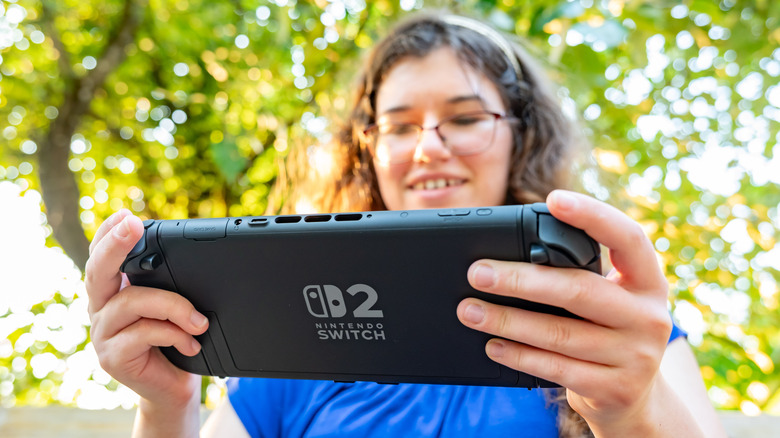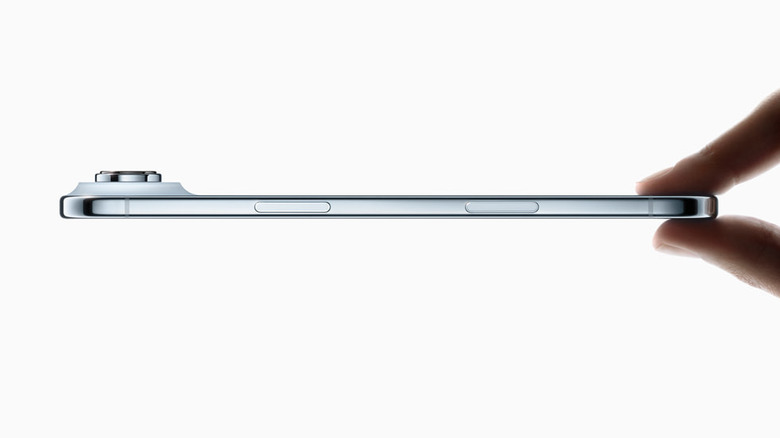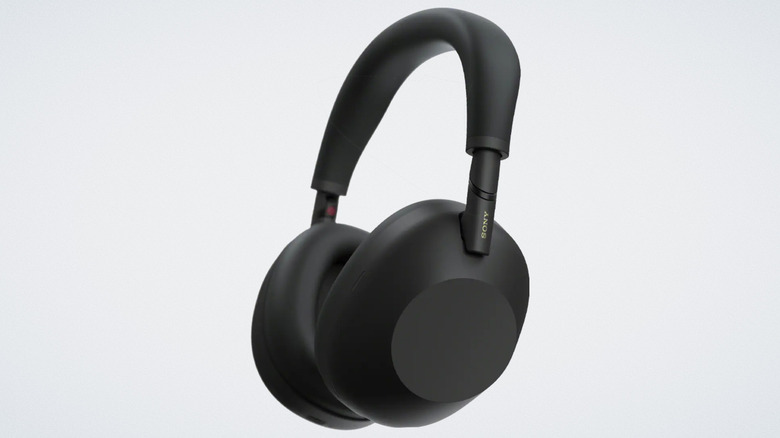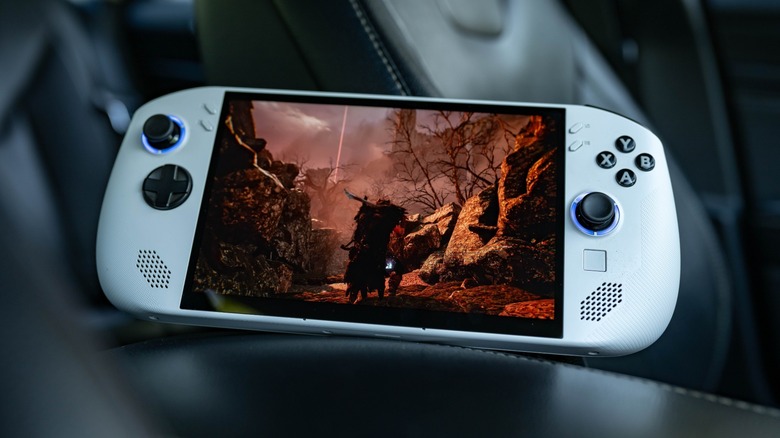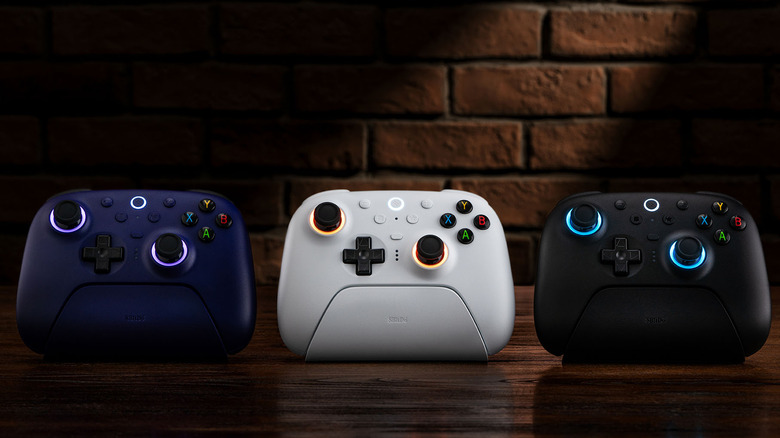5 Of The Coolest Gadgets Released In 2025
We may receive a commission on purchases made from links.
We made a long list of the most anticipated gadgets expected to release in 2025, and the list had to be kept short. Tech enthusiasts are spoiled these days because it seems like every area is getting some major upgrades. Handheld gaming PCs to replace your desktop PC are quickly becoming a thing. Consumers can get the best noise-canceling earbuds for prices that won't break the bank. Cheap SBCs like the Raspberry Pi 5 can run Windows 11. The list goes on. In 2025 alone, ranking the coolest tech gadgets released this year would require leaving some nice gear on the table.
Today we're taking a look at five of (what we think) are the coolest tech gadgets released in 2025. This list is by no means authoritative, definitive, or comprehensive. These are just gadgets that released in the current year, and that might be a great choice if you're in the market for something like it — and even if you aren't, they at least deserve a thumbs up for doing what they do so well.
Nintendo Switch 2
To call the Nintendo Switch 2 a success would be an understatement, even a few months into its tenure. Four days post-release, Nintendo pushed 3.5 million units, more than its predecessor sold during its first month. That number is now up to 6 million worldwide at the time of writing, and it's likely only going to increase as stock replenishes and fence-sitters decide to pull the trigger. What's fascinating about all of this is that the Switch 2 is arguably Nintendo's least innovative console to date. Even the Game Boy Advance SP and Nintendo 3DS (both newer versions of established platforms) introduced more changes. The Nintendo Switch 2 is literally just a bigger, more powerful Switch.
So why would we say this is one of the coolest gadgets of 2025? Because it's Nintendo taking something it did well and perfecting it rather than trying to reinvent the wheel. A common complaint with the original Switch was how underpowered it was (you could literally experience frame rate dips just checking for Wi-Fi), and the Joy-Cons had a lot of issues. Now, the Nintendo Switch 2 can play AAA games like "Cyberpunk 2077," and the Joy-Cons attach better and function as mice — and more.
Our Nintendo Switch 2 review named it a worthy successor with some caveats, and other reviews seem to reflect that. It's a pricey console that doesn't have many games yet, but assuming you can live with things like having to buy more expensive microSD Express cards or having voice chat locked behind a subscription paywall, it's worth it. Plus, battery life isn't the best, and it looks like Joy-Con drift has come back for Nintendo again. Once it gets an OLED version with Hall-effect joysticks, though, this could be a legendary console.
iPhone Air
When the iPhone Air was unveiled, it was just a super-skinny iPhone, epitomizing peak Apple. Thinness aside, it's an iPhone that costs a lot ($999) and comes with a handful of noteworthy compromises. The iPhone Air trades more than battery to get that slim body, like having one camera lens, a single speaker, slower USB transfer speeds, and a weaker GPU. For a lot of people, that price and those missing specs make it not even a consideration. Nonetheless, we think it deserves a spot on this list for a couple of reasons.
For one, it's crazy thin and light. Reviewers all seem to remark on how it's not just an ultra-thin phone for bragging rights, but it also feels better in the hand. Those who are tired of heavy phones that induce cramping and pinky fatigue may love it. Perhaps the Air is a prototype heralding a new era of ultra-light, efficient phones that still somehow eke out all-day battery life. Here's hoping the iPhone Air 2 will fix all the issues people have with it.
Second, the iPhone Air is durable to a surprising degree. When Apple said it was "more durable than any previous iPhone," everyone collectively rolled their eyes. This looked like the fourth horse of the Bendgate apocalypse. Testing revealed otherwise. JerryRigEverything, the bend-testing master, could not break the phone with his own two hands. So Zach took it to his garage and used a crane scale to apply 215 pounds of pressure before it cracked. Drop tests also give it more credit than most might expect. YouTuber TechRax dropped it 200 feet down a staircase and the screen remained functional and crack-free. If for nothing else, this phone is cool for being a marvel in thin-gineering.
Sony WH-1000XM6
Sony changed the game for noise-canceling headphones back in 2017 when it released the WH-1000XM3. These headphones sounded great, had incredible noise cancelation, insane battery life, and folded up for travel. Every iteration since has only been able to polish an already virtually perfect design. I say this as someone who has owned every version since the XM3. The Sony WH-1000XM4 was a decent (yet minor) upgrade, but the Sony WH-1000XM5 was a step backward — no folding cups, flipped cup orientation, and a change to the noise-cancelation algorithm. So when Sony released the WH-1000XM6, it corrected the XM5's wrongs and made what is arguably the best pair of noise-canceling headphones ever.
For starters, the passive and active noise canceling leveled up (even if only slightly) and so did the sound quality. Microphone quality on calls — another pain point — got a needed uplift. The XM6 went back to the tried-and-true folding storage method. The hinges got reinforced and now clamp down better. The now-smaller case did away with the zipper in favor of a far more convenient and long-lasting magnetic clasp. Even small things, like making the power button a circle so you don't confuse it with the noise-mode button, are welcome changes. The XM6 is probably not worth an upgrade if you own the XM5, but daily users of an old XM3 or XM4 will notice a change.
My personal complaints about the XM6 are only minor. Transparency mode is still just okay, and the battery life is the same 30 hours as it was in 2017. It's very pricey at $449.99, but this is one of those pairs of headphones you can buy and use daily for another 10 years.
Legion Go S (Steam OS Edition)
Shopping for a handheld gaming PC right now is a bit tricky. The Steam Deck OLED is far and away the best bang-for-your-buck purchase, but it struggles more and more with recent AAA releases. The problem is the Windows handhelds that can play those AAA games use Windows 11, and Windows isn't the ideal OS for gaming handhelds, to put it mildly. It's so resource heavy that it's been proven to run worse than Linux-based alternatives. The solution? A non-Steam Deck handheld running SteamOS, like the Legion Go S SteamOS edition. We reviewed the Legion Go S Windows edition, but shortly after, Lenovo shipped a version that runs SteamOS natively out of the box.
What makes this so cool is that it's the only instance so far where a major manufacturer shipped a gaming handheld that runs natively on Linux (aside from Valve) instead of Windows. It's not as cheap as a Steam Deck, and prices vary; Best Buy currently offers it for $549, while Amazon offers the Legion Go S with 32GB RAM and a 1TB SSD option for $729. Since the Legion Go S supports SteamOS, there's nothing stopping you from buying the Windows version secondhand and then flashing SteamOS to it.
Do keep in mind that there are other options beyond Lenovo that support SteamOS. Currently, SteamOS beta supports handhelds like the Asus ROG Ally and Ally X, and the OS has a growing list of supported AMD-powered handhelds. Bazzite (a SteamOS alternative) supports those as well, along with MSI and more niche brands like GPD and Ayaneo. In response to the success of gaming handhelds, Windows is set to launch its own handheld gaming interface in 2025, which will eventually come to all Windows 11 handhelds in 2026.
8BitDo Ultimate 2
8BitDo is an excellent third-party controller brand whether you're looking for a controller for a console, Nintendo Switch, or PC. They make retro-looking controllers, phone controllers, and even keyboards and arcade controllers. The best controller they sell, in my humble opinion, is the 8BitDo Ultimate 2 Wireless Controller. It's only a generational upgrade over the previous 8BitDo Ultimate, sure, but the refinements create one of the best controllers I've ever used or owned.
First things first, it's just a very well-designed controller. It looks good, feels good in the hands, has responsive buttons that aren't too clicky, and comfy thumbsticks that don't strain your thumb pressing L3 or R3. The included charging dock both mounts your controller and connects it directly to your PC via low-latency 2.4GHz — so it connects automatically the second you pick it up. It includes extra programmable L4/R4 bumpers and PR/PL paddle buttons, as well as trigger locks if you're tired of doing a full trigger pull for games that don't need it. There's a gyroscope for supported games and RGB if that's your thing.
To sweeten the deal even more, the controller uses more precise and low-power TMR joysticks and Hall-effect triggers, meaning this controller is more accurate, sips power, and will last longer than most comparable controllers. Though this controller is intended for non-Switch button layouts, it works with virtually any device that supports a controller. Long story short, this is an incredibly well-built device that goes above and beyond the needs of most players and is designed to play many games, for many years, on many devices. Though the 8BitDo Ultimate 2 Wireless Controller retails for $59.99, I've seen it online for as low as $30 on sale.

